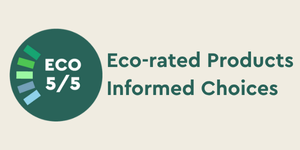Understanding Ingredient Transparency: Shampoo, Body Wash, and Cleaning Products
Have you ever noticed that when you pick up a bottle of shampoo or body wash, the list of ingredients is right there on the packaging? However, when it comes to cleaning products like floor cleaners or dishwashing liquids, the ingredient list is often absent. This discrepancy in ingredient transparency might have left you wondering - why the difference?
Safety and Regulation:
One of the primary reasons behind the ingredient transparency on shampoo and body wash products is consumer safety. Personal care products, such as shampoos and body washes, come in direct contact with our skin and hair. The ingredients used in these products have the potential to impact our health, causing allergic reactions or other adverse effects. To protect consumers, regulatory bodies like the U.S. Food and Drug Administration (FDA) require manufacturers to disclose the ingredients on the packaging.
On the other hand, cleaning products are generally intended for use on surfaces rather than direct contact with the skin. Regulatory agencies, such as the Environmental Protection Agency (EPA), oversee the safety of these products. While they mandate proper labeling for potential hazards and usage instructions, ingredient disclosure may not be mandatory. This is because the primary concern lies in the product's efficacy rather than its impact on human health.
Trade Secrets and Proprietary Formulations:
Cleaning product manufacturers often consider their formulations as trade secrets or proprietary information. Revealing the exact ingredients and their proportions could allow competitors to replicate their products, potentially impacting their market share and profitability. Consequently, manufacturers tend to maintain a level of confidentiality when it comes to their cleaning product formulations.
Complex Ingredient Mixtures:
Cleaning products usually consist of a blend of chemicals that serve various purposes, such as surfactants, solvents, fragrances, and preservatives. Unlike personal care products that have a relatively smaller and more straight-forward ingredient list, cleaning products often contain complex mixtures. These mixtures might involve chemicals with long, complex names that are unfamiliar to consumers. Displaying a lengthy list of chemical names without providing additional context or explanation could be confusing or misleading.
Focus on Product Performance:
Cleaning products are primarily designed to be effective in removing dirt, grease, and stains from surfaces. Manufacturers tend to emphasize the performance and efficacy of their products rather than the specific ingredients used. Since consumers generally prioritize the effectiveness of a cleaning product, the emphasis is placed on product claims, such as stain removal, disinfection, or deodorizing properties, rather than the individual ingredients.
While shampoo and body wash products are required to disclose their ingredients due to direct skin contact and potential health risks, cleaning products operate under different regulations. The absence of ingredient lists on cleaning product packaging is primarily due to a combination of safety considerations, trade secrets, complex formulations, and the focus on product performance. However, as consumers become increasingly conscious about the chemicals present in their everyday products, advocating for greater transparency in cleaning product labeling may lead to positive changes in the industry.
https://www.insinc.co.nz/natural-ecofriendly-cleaning-products.html
Posted: Friday 19 May 2023


